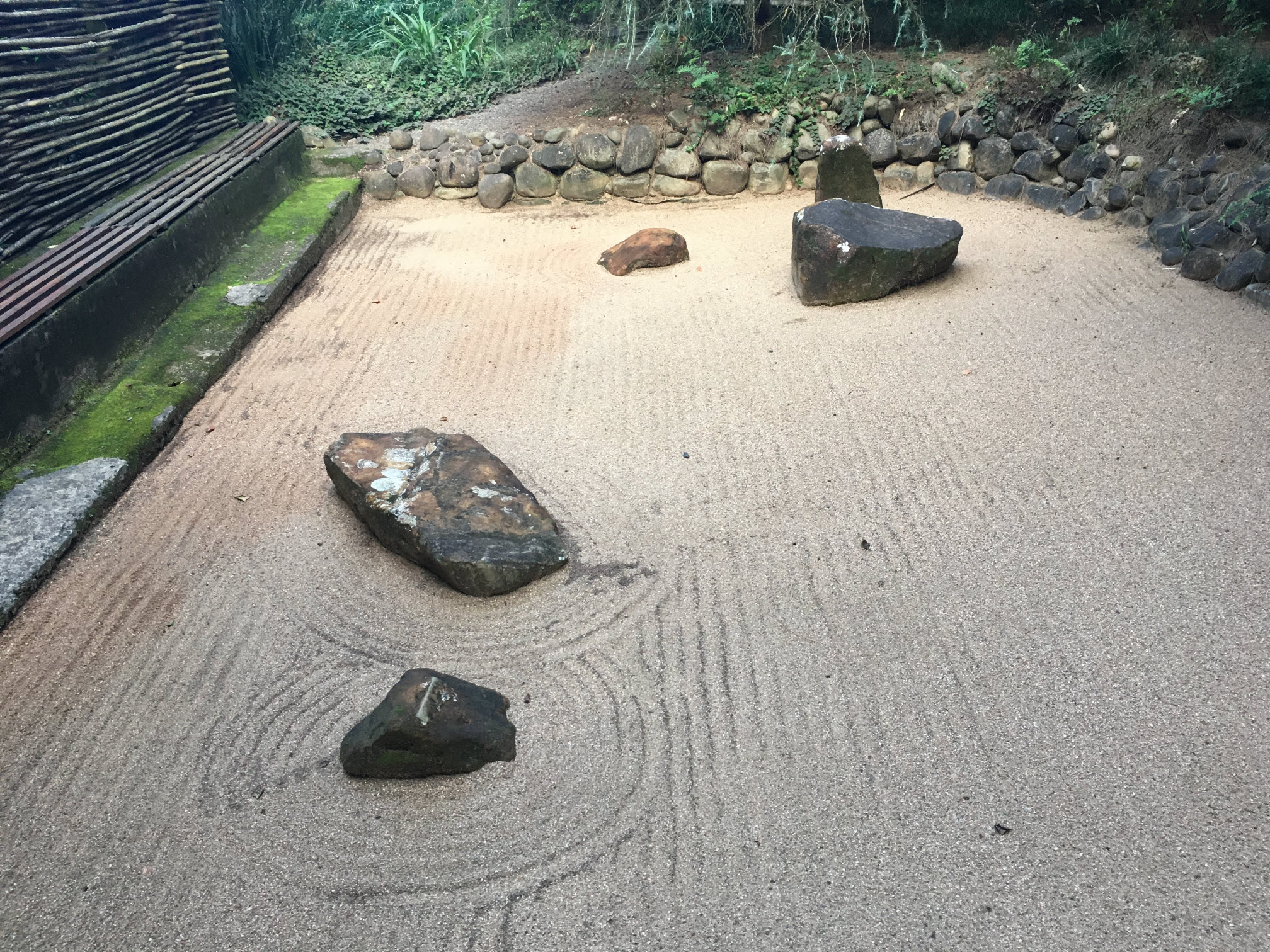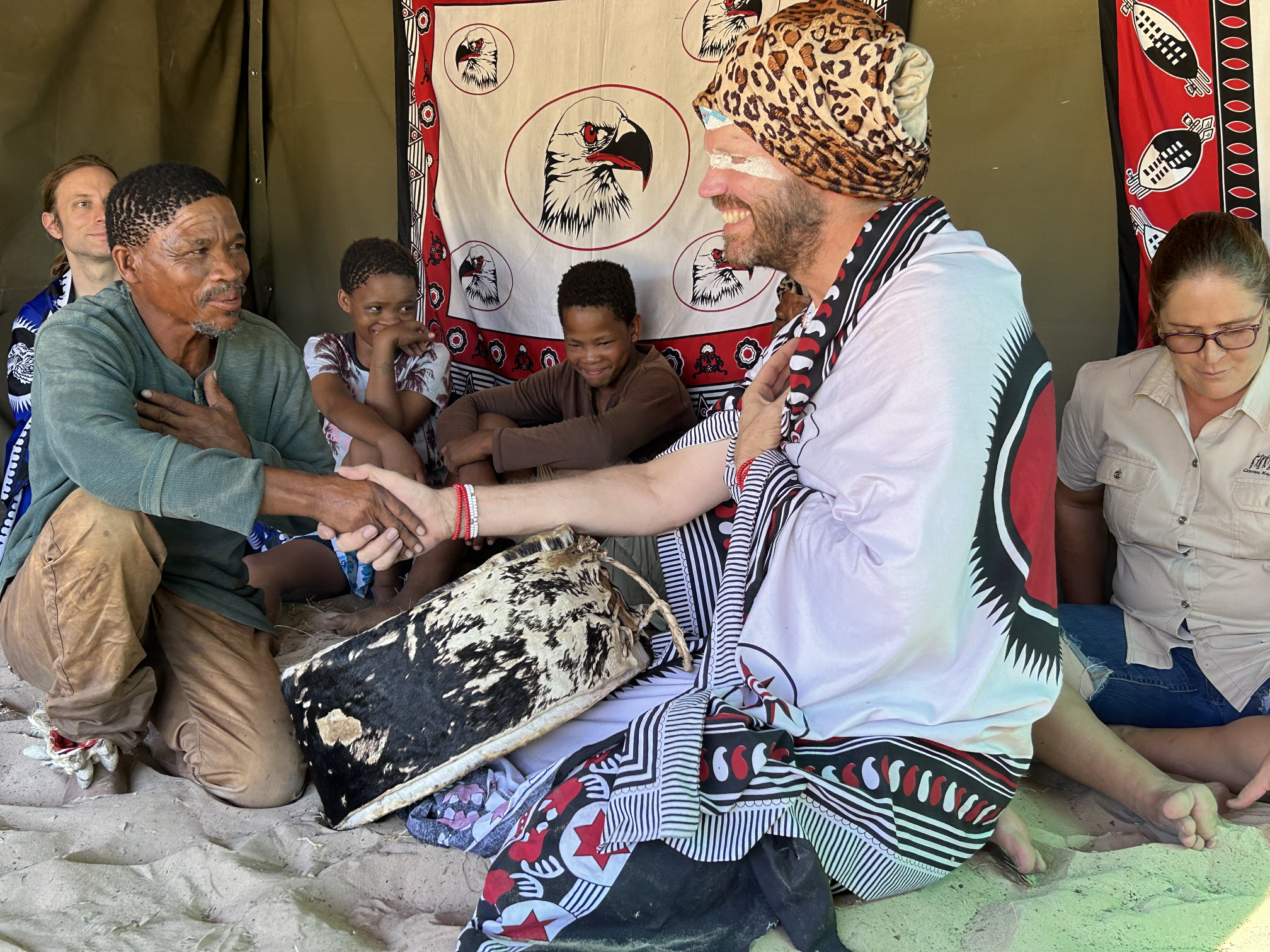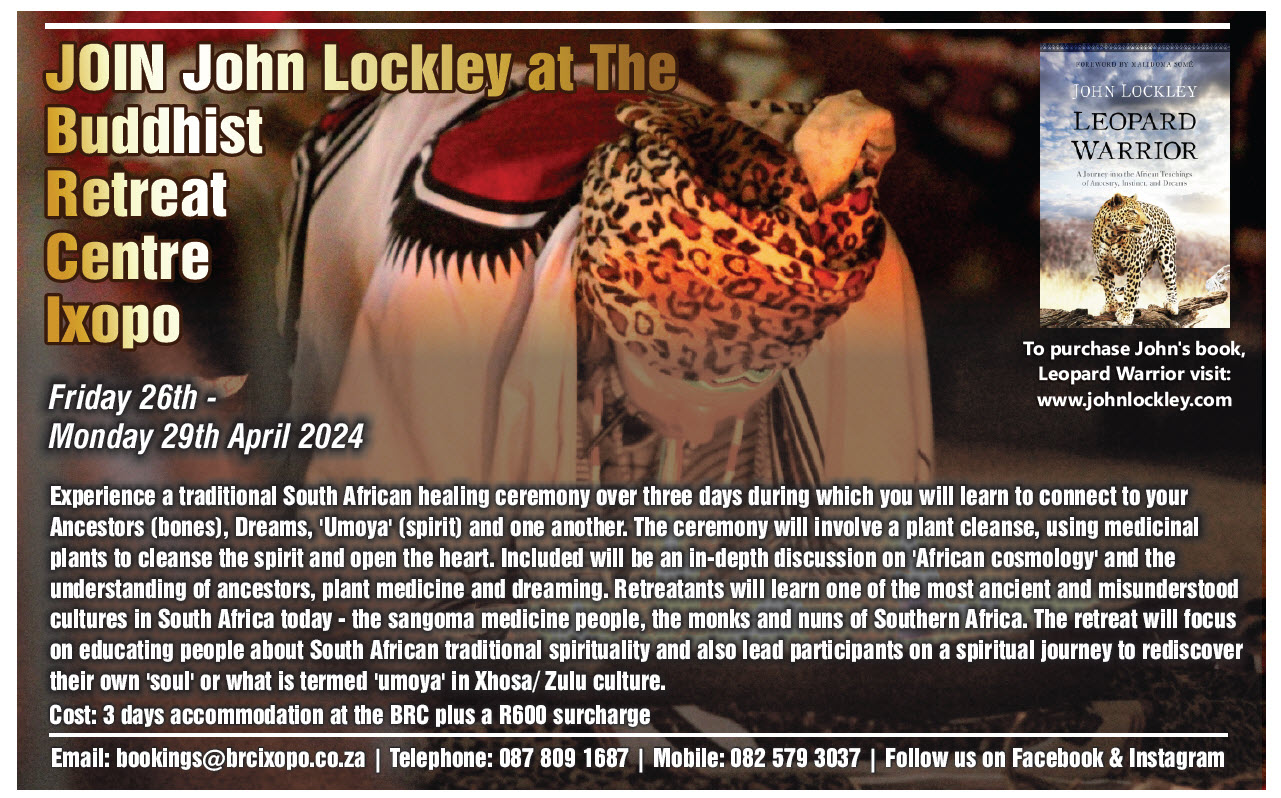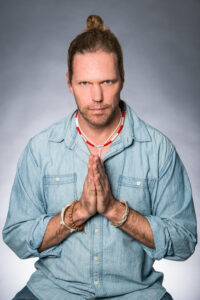War and Peace, Searching for Healing in a Troubled World

There is chaos in the hearts of man. And our chaos spreads like a virus into the natural world, resulting in species extinction and unimaginable environmental destruction. It’s hard to conceive of war on the level of World War One and Two, with millions of deaths and untold destruction. As we witness the recent wars in Gaza and Ukraine, we are all called to ponder the question of ‘Why’? And is it necessary to resort to violence in order to be seen and heard? How can we fulfil our role as custodians of this planet and rightful guardians of the plant and animal worlds? It is clear that we need to face our own darkness and explore our inner shadows meticulously and be aware of what we might project onto people we perceive as other or different. In South Africa we have had many lessons around this from the last few hundred years since the start of colonisation, then apartheid and now democratic South Africa.
For those of us who study nature and have learnt to befriend the changing seasons, we know that chaos is part of change and transformation. A thunderstorm brings lightning and rain. The rain nourishes the land and makes new life possible. In order to bring peace to our world we need to befriend our inner weather and ride the storms of shadow energies involving turbulent emotions like anger and resentment. What do we do when these energies seek to overwhelm us? Attack another, ourselves or transmute them into something more productive? Anger is a powerful emotion that can help us transform the living fabric of society. But to do it effectively requires discernment and respect. First, we need to respect ourselves and not give in to our inner critic and, when we find ourselves in conflict with others, we need also to hold a space in our hearts for respecting them. In martial arts from the Far East like Karate in Japan, opponents begin and end their match with bowing to each other.
I recall a story of Nelson Mandela years ago when he was televised in his meeting with the heads of the Palestinian and Israeli youth leagues. They asked him how he managed to create peace in South Africa. He was very matter of fact and recounted his talks with FW de Klerk in the early years. He said they would start each day shaking one another’s hands and having a cup of coffee together. During the course of the day, they would argue with one another and sometimes it would get quite heated. The youth league presidents asked him if he ever felt like giving up. He said, “no”, because he and Mr de Klerk were aware that millions of South Africans were counting on them to find a peaceful solution. It wasn’t personal. No matter how difficult their day was they would always say good bye in an amicable and courteous manner.
In order to understand Mandela’s diplomacy and humanitarianism we need to explore an important aspect of his journey. Many people might not be aware of Nelson Mandela’s personal journey around his struggle with anger and hatred over white rule and lengthy incarceration. He recounts his story in his autobiography A Long Walk to Freedom. He said that, one night before he went to sleep, a voice said to him: “Nelson your anger can kill you.” And when he woke the next morning he remembered this voice and the next thing he heard was “…you need to befriend the enemy.” These thoughts were going through his mind when the white jailer unlocked his jail cell. All he said to him was: “What made you decide to become a jailer and join the correctional services?” The guard was a young white man and told Mandela he didn’t have a choice because his father died when he was only 15 years old and he had to get a job to help support his mother and four younger siblings. This shocked Mandela because he thought all white people were privileged. He realised in their discussion that he grew up with more privilege because, when his father died when he was seven years old, he was brought up in the royal household of the Prince of the Xhosa nation. This enabled him to go to university and become a lawyer. He only knew apartheid when he was 21 years old. He asked the young jailer where he grew up. The man replied that his family had a farm in the Eastern Cape. Mandela was surprised and told him that he too was from the Eastern Cape. He then asked him in isiXhosa if he understood the Xhosa language, and the young jailer replied “ewe, ndiyasaze isiXhosa!” Yes, I know Xhosa. And they finished their conversation in Mandela’s home language, isiXhosa. When Mandela became president of South Africa his young jailer friend was sitting next to him as they had become close friends over many years.
I took part in a traditional Zen Buddhist retreat in the early 1990s in a temple in South Korea. The Berlin Wall had just fallen a few years previously, resulting in the end of the cold war. There were many ex-soldiers on my retreat from East Germany, Russia, Czechoslovakia, Poland and myself from South Africa. We all meditated like soldiers with discipline and a hunger to find peace within amidst the trauma of our collective experiences. During the 100 days retreat we became like brothers as we sought to befriend our inner demons and the cold of a Korean winter. I had never seen so much snow before. Sometimes our Zen Master would usher us outside at 10 o’clock at night to sweep the temple grounds before the old people visited the temple in the early hours. One particularly cold night, as the Siberian winds ushered in fresh snow, the Grand Master, Seung Sahn, was giving a dharma talk. He finished his talk with asking us if we had any questions. Everyone was silent and then a young Californian woman said: “What do we do when the devil comes knocking?” Seung Sahn replied in his jovial way: “Ahhh, the devil! Well, ask the devil if he would like a cup of tea.” In life we our constantly fighting and blaming the devil for all of mankind’s problems. His answer was a quintessential Zen reply. Respect all of life, including the devil. It doesn’t mean we need to side with the devil, but rather take a pause, reflect, bow and listen. This brings to mind a traditional Zen Garden with stones and sand in harmony. Listening within brings about spaciousness. As we meditate on the stones and the sand, we start to befriend the opposites of light and dark within us. Nothing is wholly good or bad, light or dark. It is our reactions that make it so.

Zen Garden at the Buddhist Retreat Centre
Many people are speaking about the wars in Ukraine and Gaza while the hidden war against animals and nature continues unabated. As humanity fights with one another and with issues of power, powerlessness, wealth and poverty, the natural world is dying. What can individuals do? As a traditional South African healer or sangoma the answer is simple; we need to connect to our own ‘Ubuntu‘ (humanity). This involves befriending our ancestors and our inner demons or conflicts. Ubuntu is a circle and speaks about the importance for all of us to hold hands and embrace our collective humanity. In traditional Xhosa and Zulu culture every human being is seen as being related when you go back far enough. Why? Because we all have red blood and this blood or life force is transferable from person to person regardless of creed, culture or skin colour. We are the natural guardian and custodians of planet earth. We have an unassailable duty and responsibility to all of life on earth. The animals and plants are counting on us to respect life. And when we look closely at the natural world, we see the teachings of mutual respect and understanding shining back at us. Plants are wonderful teachers and demonstrate unconditional love in their offerings to the world of medicinal plants that spread healing and harmony.
In order to heal our world, we need to look into the past and see how our ancestors dealt with chaos, whether environmental or man-made. We are lucky in Africa still to retain a connection to our distant past. Southern Africa is thought by many anthropologists to be the birthplace of mankind. Our ancient ancestors are thought to be a small band of hunter-gatherers or San Bushmen that inhabited the coastal regions of South Africa. They left their mark with numerous rock art paintings highlighting their incredible spiritual and tracking talents. They are the spiritual ancestors of current sangoma or African shamanic lineages in Southern Africa and represent what is possible when we connect to our spirit through trance dancing, plant medicine and following the tracks of animals in the sand. We are part of nature and, in order to heal our environment and prevent species extinction, we need to learn the language of nature.
I was on a recent ‘Dreams and Tracking’ retreat in the Kalahari Desert and I was speaking to one of our Bushman trackers about healing and dreams. In my experience as a sangoma I have encountered many people who are not remembering or connecting to their dreams. As we walked through the bush together, hundreds of kilometres away from modernity, I asked him if he could recommend any plants that can help people to remember their dreams and connect to their ancestors. The reason being, sangomas believe that, as people connect to their dreams and ancestors, then they connect to their Ubuntu and balance and harmony are returned to the circle of life. The Bushman tracker walked past a shrub, stopped and broke a piece off and placed it in his mouth. He then smiled in a gentle way and told me about this plant. He said that this particular medicinal plant was very powerful because it could heal conflict in the community. If people are struggling with one another in the community, they bite a piece off and spit it on the ground between them. This will help reduce the conflict and spread harmony. At this time the Ukraine war had just started thousands of kilometres away. The bees were going about their business pollinating flowers and an interesting flock of birds was gravitating around a nearby bush speaking in the language of nature that we were trying to understand.
One of the Bushman elders started to speak in an animated way with the young tracker and they were pointing at me. The elder then approached me and asked me if he could participate in my ‘shrine tent activities’. He had heard about this white sangoma and wanted to see what I do. I was overjoyed and said: “Yes of course, join anytime.” Every year on my Kalahari retreats I create a shrine tent for seven days in the bush. It is a place where I teach people ‘inner tracking skills’; in particular how to connect to ancestors, dreams and ubuntu, the circle of life. The next day the Bushman elder called Qhuikhao Qoma joined our shrine tent with about 10 or more of his family/community members. I beat my sangoma drum and we danced and sang together. I explained how I teach people how to pray in the sangoma way and then we all prayed together. It was a beautiful blend of different languages and cultures. The birds took a flight closer to see what was going on. The Bushman band said that people visit them from all over the world but never tell them about their lives only asking many questions about them and how they live. They said they were curious about modern people and how they experienced life. I thanked them for their comment and then we went around the room and each retreat participant gave their name and where they came from in the world. People listened to one another. We then spoke about what was happening in the world and one of the Bushman ladies said the biggest problem she has noticed is that people are becoming selfish, they don’t want to share. We compensated for this by listening more deeply and bridging our ancient and modern worlds.
At the end of our ceremony in the bush I offered Qhuikhao Qoma one of my sangoma fabrics which I draped over his shoulders. At the same time, I noticed a vulture flying towards us, low – almost touching the trees – and then flying over our heads. This was a wonderful sign, as vultures often represent transformation. Sangomas view them as powerful healers, with the ability to transform poison and negativity. This was a realisation of a vision I had for many years, of ancient and modern people sitting around a fire revisioning our humanity.
The default for every human being is empathy for life because we have seven senses. When we decide to activate them, we have the potential to heal our world. John

John and Bushman elder Qhuikhao Qoma on retreat in the Kalahari


John Lockley is a traditionally trained sangoma in the Xhosa and Swazi lineages. He apprenticed for 10 years under MaMngwevu, a Xhosa sangoma in the Eastern Cape. He has pioneered the bridge between modern western psychology and traditional South African spirituality. His Xhosa name given by his teacher is ‘Ucingolweendaba’ meaning ‘the messenger’ or ‘bridge between people’. For the last 13 years he has been facilitating ‘Ubuntu’ (humanity) and ‘Way of the Leopard’ retreats worldwide, teaching people how they can reconnect to their ancestors, spirit and the earth. John’s passion is teaching people indigenous African medicine to help them reconnect to the earth. He facilitates this through his ‘Dreams and Tracking’ retreats in the Kalahari Desert every year and his retreats at the
Buddhist Retreat Centre (BRC) in Ixopo, KwaZulu-Natal, South Africa. John’s bestselling book Leopard Warrior and audio teaching course ‘Way of the Leopard’ are both produced by Sounds True and available in leading bookstores, Amazon and Kindle. You can also get it directly via John’s website: https://www.johnlockley.com/press.
John is a public speaker and is often requested to speak on international podcasts with a focus on African and spiritual themes like Ubuntu and our relationship with the environment. John can be contacted via his website for speaking engagements.
John will be leading another series of retreats in the Kalahari Desert in 2024 followed by ‘Leopard Warrior Trails’ in May in South Africa. He will also be running an intensive three day Ubuntu retreat at the BRC from 26th – 29th April 2024. Visit John’s website for more information, or to sign up for his newsletter: https://www.johnlockley.com.
John Lockley is a traditionally trained Xhosa sangoma and travels the world teaching indigenous medicine and running ‘Ubuntu’ (humanity) retreats. John’s website, Website
John’s book ‘Leopard Warrior’ and audio teaching course ‘Way of the Leopard’ are both produced by Sounds True and available in leading bookstores, amazon and kindle.
John Lockley Books
